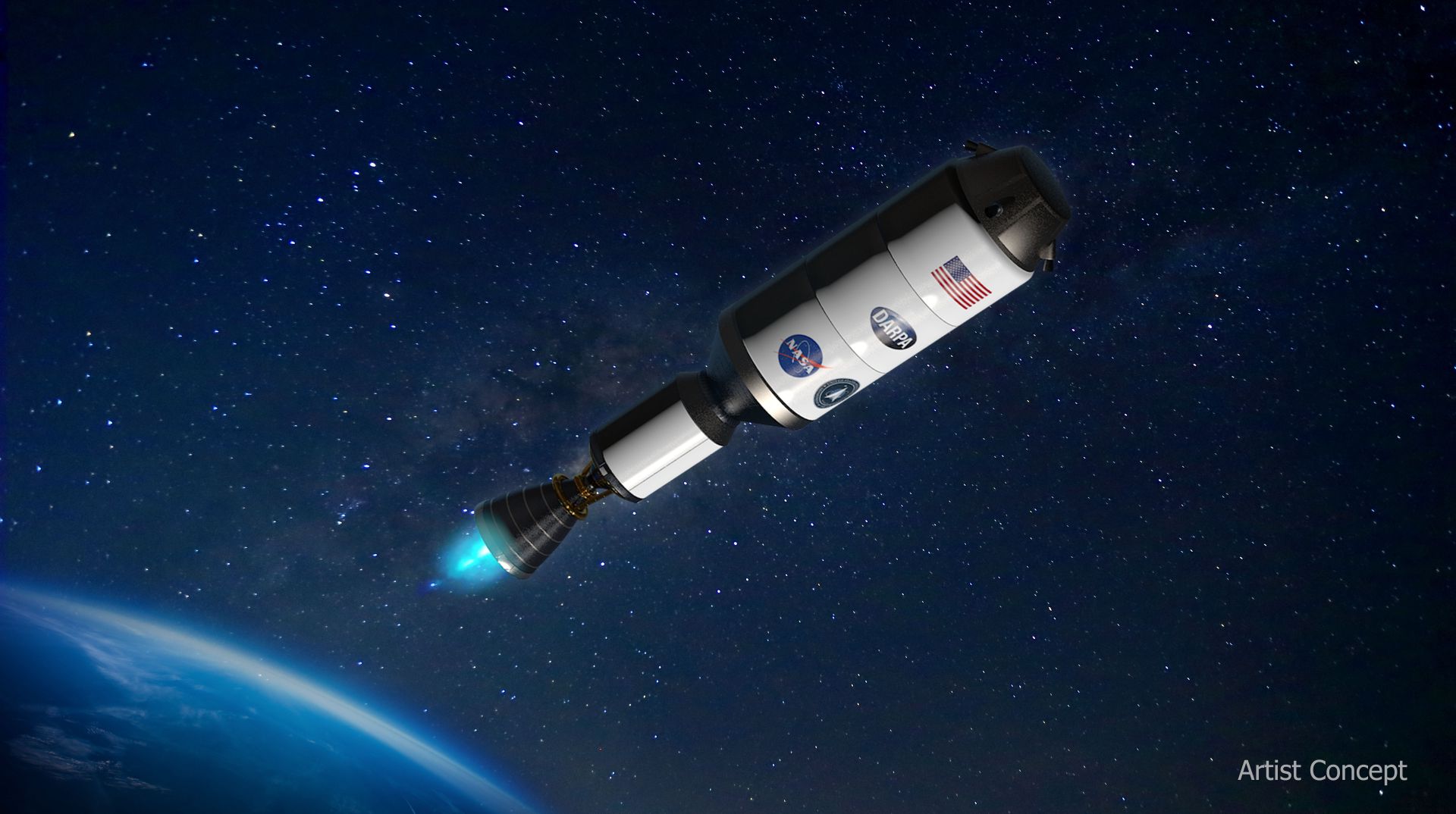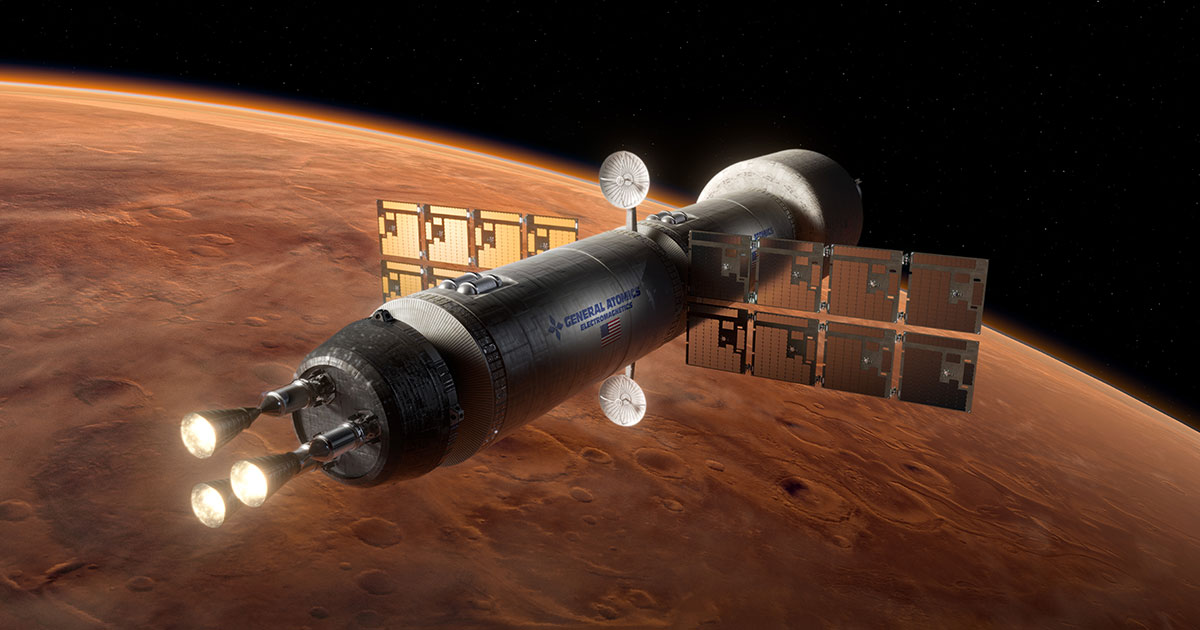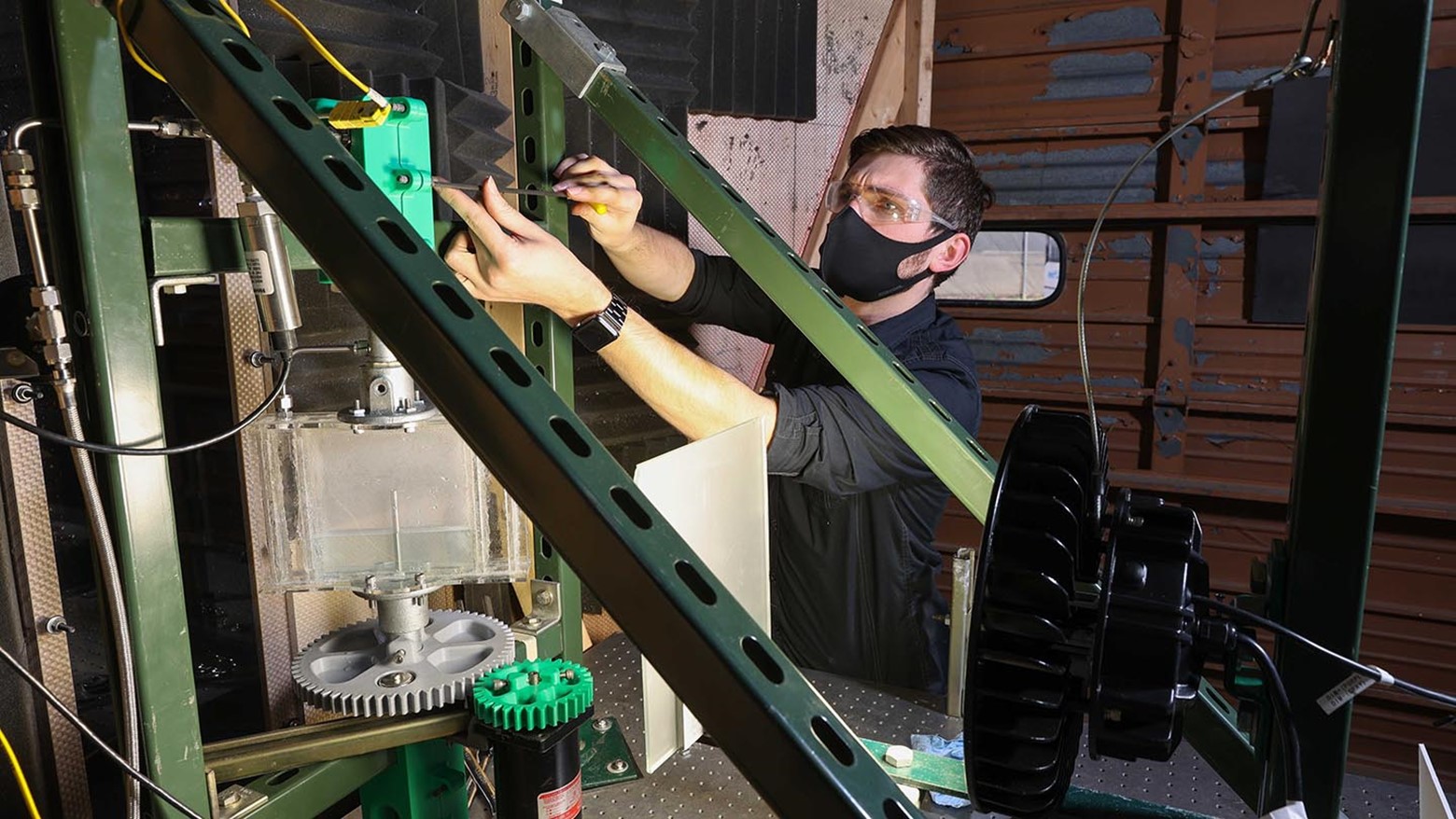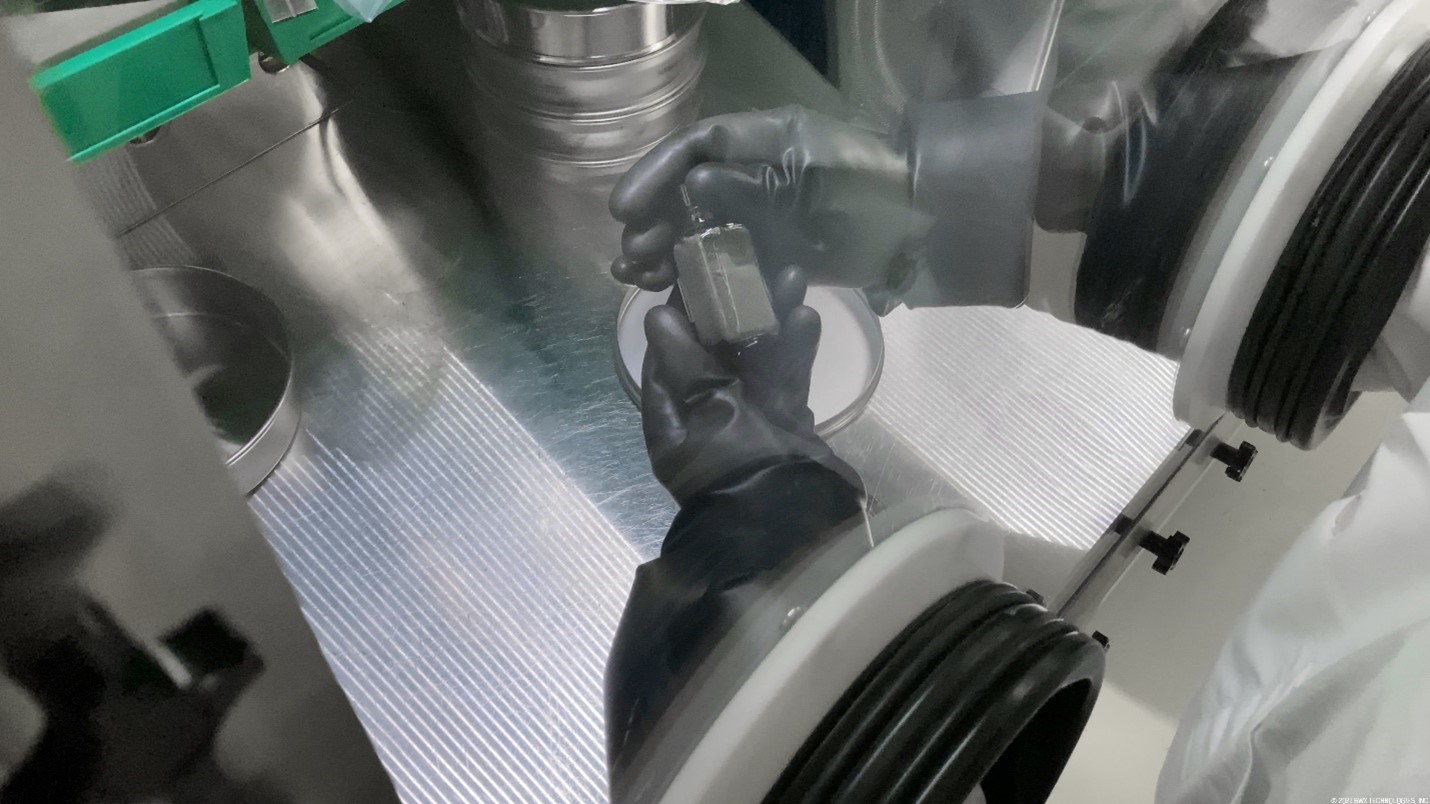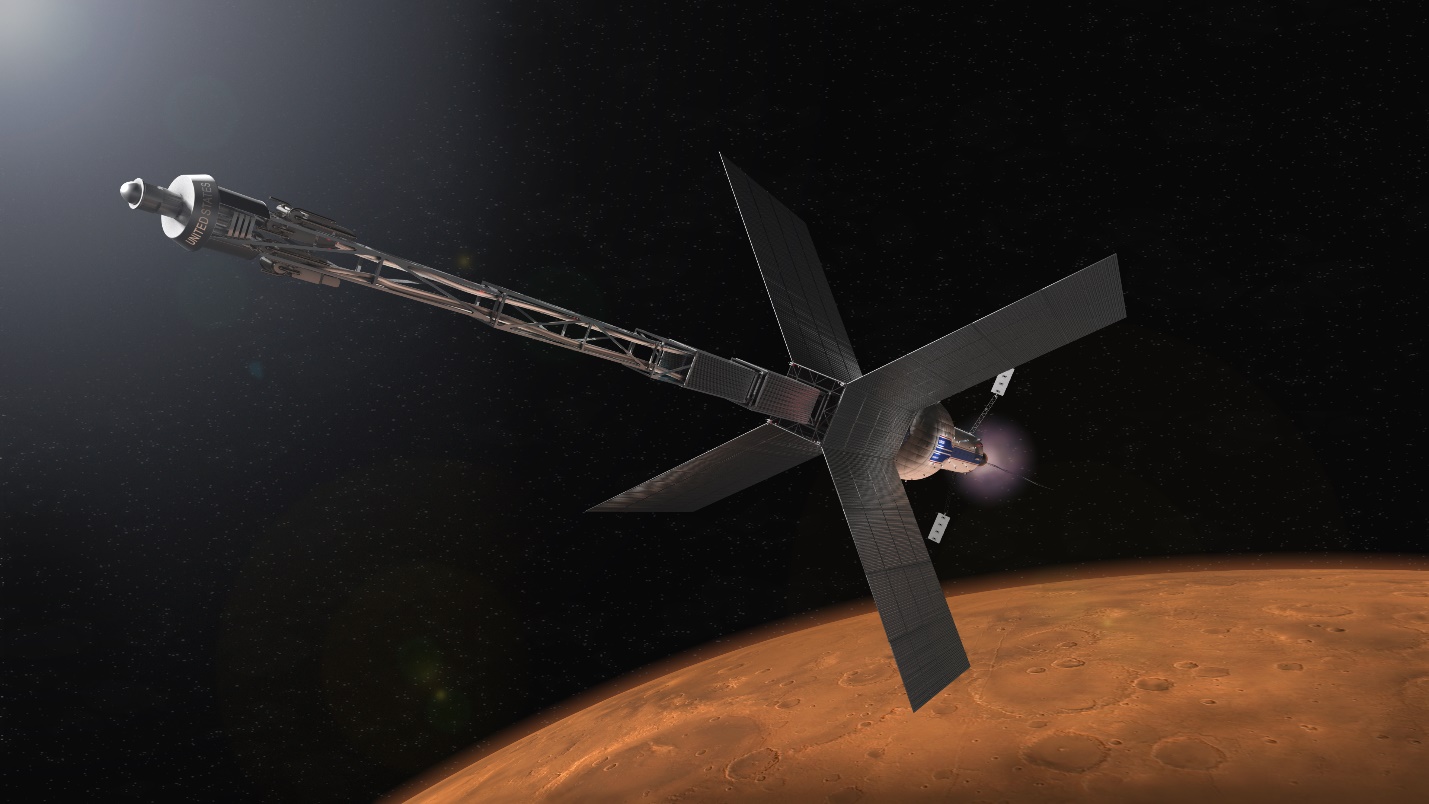Concept art of a nuclear thermal propulsion system. (Image: USNC)
Ultra Safe Nuclear (USNC) announced on October 17 that it had been awarded a contract by NASA to develop and mature space nuclear thermal propulsion (NTP) systems to advance the nation’s cislunar capabilities. Under the contract, USNC says it will manufacture and test proprietary fuel and simultaneously collaborate with its commercial partner, Blue Origin, to mature the design of an NTP engine optimized for near-term civil science and cislunar missions.
Artist’s concept of the DRACO spacecraft, which will demonstrate a nuclear thermal rocket engine. (Image: DARPA)
NASA and the Defense Advanced Research Projects Agency (DARPA) have announced they will collaborate on plans to launch and test DARPA’s Demonstration Rocket for Agile Cislunar Operations (DRACO). DARPA has already worked with private companies on the baseline design for a fission reactor and rocket engine—and the spacecraft that will serve as an in-orbit test stand—and has solicited proposals for the next phase of work. Now NASA is climbing on board, deepening its existing ties to DRACO’s work in nuclear thermal propulsion (NTP) technology—an “enabling capability” required for NASA to meet its Moon to Mars Objectives and send crewed missions to Mars. NASA and DARPA representatives announced the development at the American Institute of Aeronautics and Astronautics SciTech Forum in National Harbor, Md., on January 24.
This landscape speckled with glittering stars is the edge of a nearby, young, star-forming region called NGC 3324 in the Carina Nebula. Captured in infrared light by NASA’s new James Webb Space Telescope, this image reveals for the first time previously invisible areas of star birth. (Photo: NASA)
ANS’s August 4 online event “The New Space Race is Going Nuclear” featured several expert panelists who discussed the growing importance of nuclear technologies in space commercialization and exploration. Although nuclear energy has long played a role in space missions, participants discussed the latest exciting developments in the space nuclear field and presented their views on how increased application of nuclear technologies could fundamentally transform the ways in which both crewed and uncrewed space missions are carried out.
Artist’s rendering of USNC spacecraft using EmberCore. (Image: DIU)
The Defense Innovation Unit (DIU), a Department of Defense organization focused on swiftly putting commercial technology to use in the U.S. military, has awarded contracts for two nuclear technologies—compact fusion and radioisotope heat—for spacecraft that could carry a high-power payload and freely maneuver in cislunar space. The objective is to accelerate ground and flight testing and launch a successful orbital prototype demonstration of each approach in 2027.
Ben Campbell, a graduate research assistant and master’s degree student in aerospace systems engineering, works on the Bubbling Liquid Experiment Navigating Driven Extreme Rotation, or BLENDER, device at UAH’s Johnson Research Center. (Photo: UAH/Michael Mercier)
With three commercial teams under contract to produce reactor designs for nuclear thermal propulsion rockets that would use solid high-assay low-enriched uranium fuel to heat hydrogen propellant, NASA’s investment in nuclear thermal propulsion (NTP) has increased in recent years. But just as there is more than one way to fuel a terrestrial reactor, other fuels are under consideration for future NTP rocket engines.
Coated uranium fuel kernels, as viewed through a glovebox. (Photo: BWXT)
Nuclear thermal propulsion (NTP) is one technology that could propel a spacecraft to Mars and back, using thermal energy from a reactor to heat an onboard hydrogen propellant. While NTP is not a new concept, fuels and reactor concepts that can withstand the extremely high temperatures and corrosive conditions experienced in the engine during spaceflight are being designed now.
BWX Technologies announced on December 13 that it has delivered coated reactor fuels to NASA for testing in support of the Space Technology Mission Directorate’s NTP project. BWXT is developing two fuel forms that could support a reactor ground demonstration by the late 2020s, as well as a third, more advanced and energy-dense fuel for potential future evaluation. BWXT has produced a videoof workers processing fuel kernels in a glovebox.
BWXT is using advances in manufacturing and fuel to power exciting technology
The United States is pursuing the objective to land humans more than 100 million miles away on Mars, and nuclear power has the potential to be a key technology in getting to the Red Planet and providing power while there. Specifically, nuclear thermal propulsion (NTP) is a promising approach that could enable astronauts to travel from Earth’s orbit to Mars and back in a fraction of the time, and with greater safety, than is available with other options.





